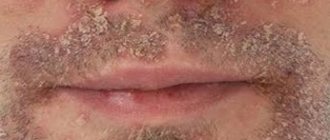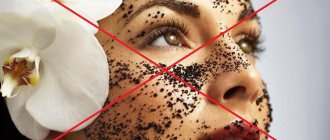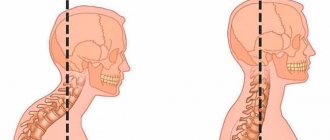Gynecomastia is an enlargement in men of one or both mammary glands due to the proliferation of fatty or glandular tissue. The diameter of the glands in this pathology can reach 15 cm. Juvenile gynecomastia occurs (at the age of about 14 years in boys, up to 70%), in young people (40%), in the elderly and elderly (up to 70%). In women, gynecomastia as such is rarely diagnosed, because constant growth of the mammary glands is a normal variant. Pathology is indicated when their volume exceeds 400 cm3, in other cases it is hypertrophy.
Causes
In men, the mammary glands are an underdeveloped organ that consists of fat and glandular tissue. If estrogens begin to predominate in the body, tissues lose sensitivity to testosterone. As a result, the mammary glands grow according to the female type, that is, glandular tissue grows. Fat deposition is provoked by a pituitary adenoma. Other reasons:
- increased secretion of prolactin;
- impaired metabolic processes;
- cardiovascular failure;
- local injuries;
- HIV;
- intoxication of the body;
- renal failure;
- cirrhosis;
- taking certain medications;
- alcoholism, drug addiction.
In women, pathology can develop for 4 main reasons:
- obesity;
- pregnancy and lactation;
- taking certain medications (glucocorticosteroids, anabolics, etc.);
- hormonal disbalance.
What to do for those who have the most noticeable difference in muscle volume
Of course, it’s unpleasant to have a disproportionate body, but don’t despair - everything can be fixed if you follow my recommendations, but first, let’s look at the main mistake that many athletes make on the way to a proportionate body.
As you already understand, the question is, what to do if one pectoral muscle is larger than the other? It can happen to each of us. But the worst thing is that many people believe that if you give the lagging muscle an even greater load (weight), it will grow, and therefore the proportion of muscles on both sides will appear. But everything is not as simple as it seems, since this method, in most cases, only leads to injury and overtraining (regression), since in fact, most often, everything happens this way:
- The weak muscle (lagging behind) already received a good load from your working weight, but if you load it even more, the exercise technique will disappear completely, which means that part of the load will be taken not by the target muscles, but by auxiliary muscles, tendons and the stronger side of the muscle. -for the crooked execution of the exercise. Which can lead to injury.
- Due to heavy loads on weak muscles, more catabolic (stress) hormones will be released, which have a very detrimental effect on muscle growth (destroy them).
- And yet, a weak muscle, due to the heavy weight on it, may not have time to recover before the next workout. Therefore, with each session, if this continues for several weeks or months, then you are guaranteed to overtrain.
By the way, as for injuries, many athletes ended their sports careers thanks to them. Succumbing to the temptation to do everything faster, they were forced to regret this decision for a long time... Don’t repeat this mistake: “The slower you go, the further you will go.”
Symptoms
The following symptoms are typical for men:
- increase in mammary glands up to 15 cm in size and weight - up to 150 g;
- enlarged areola (up to 3 cm), nipple, increased pigmentation, milky discharge (rare);
- sensitivity of the nipples against the background of painless breasts;
- feeling of pressure, swelling of the mammary glands
In women, the main symptom is breast enlargement on one or both sides. The most common form of pathology is bilateral. This is a simple type of disease. However, there is a nodular variety, which is characterized, in addition to breast enlargement:
- pain syndrome;
- seals;
- discharge from the nipples, including blood.
This is how nature works
Strictly speaking, there should be no panic. The human body is designed in such a way that there is no clear symmetry in it. To make sure of this, just take the measuring tape that seamstresses use and carefully measure the muscles on the right and left sides of the body. Even an ideal athlete, in whom no difference is visually visible, will still have discrepancies in measurements. By the way, performing bodybuilders (professionals) very carefully monitor the proportions of their bodies and the problem of lagging muscles is very familiar to them. After all, modern bodybuilding, in some way, resembles a beauty contest, where, in addition to relief and volume, there must be ideal symmetry.
Sometimes the determination of body parameters is influenced by lighting and viewing angle. So ask your friend to look at you from a different vantage point. It is quite possible that all this just seemed to you and there is no need to worry about trifles.
Diagnostics
In men
The doctor examines the patient, palpates the testicles and mammary glands, and collects anamnesis. Then tests are carried out for hormonal examination. This is a blood donation for FSH, estradol, hCG, testosterone, prolactin, LH, etc. To exclude tumors, CT, radiography, and ultrasound of the scrotum are prescribed. If cancer is suspected, an ultrasound and biopsy are performed.
Among women
A thorough examination and palpation of the patient is carried out in the supine, lateral, and standing positions. Next, mammography, ultrasound, ductography, and MRI are prescribed. If cancer is suspected, a biopsy is necessary.
How to treat myositis?
Treatment of any inflammatory processes requires an integrated approach, since in addition to relieving acute and painful symptoms, it is important to influence the cause of their occurrence. It is advisable to begin treatment of both acute and recurrent forms with drug correction, and after regression of symptoms, continue therapy with physiotherapeutic methods and physical therapy.
Medications
You can get rid of pain and stop inflammation during myositis with the help of drugs from the NSAID group. Combination drugs are considered the most effective, for example, combinations of paracetamol and ibuprofen (“ Ibuklin ”, “ Next ”) or a combination of diclofenac with paracetamol (“ Panoxen ”). The group of drugs with a rapid analgesic and anti-inflammatory effect also includes meloxicam ( Movalis , Amelotex ) and Aertal , a drug based on aceclofenac, a derivative of acetic acid and related compounds.
Painkiller Next
Drug treatment of myositis can also be supplemented with the following medications:
Classification of gynecomastia
True
With this type of gynecomastia, the stroma and glandular tissue grow abnormally. Divided into three types:
- in children under one year of age and newborns, who are characterized by enlargement of the mammary glands in 60-90% of cases due to the entry of maternal hormones into the body in the womb;
- teenage (30-60% of cases), predominantly occurring at 13-14 years of age in the form of a bilateral increase due to hormonal immaturity;
- in the elderly, associated with hormonal changes.
False (pseudo gynecomastia)
There is active deposition of fat in the mammary gland area.
Classification and features of the flow
According to the nature of the course, the disease is divided into two forms: acute (identified for the first time) and chronic, which can also be chronic secondary or recurrent.
Types of myositis and their symptoms
| Form | What is it characterized by? |
| Acute | The main symptom of an acute inflammatory process in the muscles is severe pain. Most often it manifests itself as a burning sensation, but in some cases patients complain of dull, aching or cutting pain. The localization of pain depends on which muscle was involved in the pathological process. Diffuse pain with myositis is extremely rare and is almost always associated with the spread of inflammation to surrounding tissues. A patient with acute myositis of the chest cannot bend forward or turn the body. It is possible that the pain may intensify at the moment of inhalation (the deeper the breathing, the more intense the pain). The skin at the site of inflammation is usually hyperemic, and the local temperature rises. Severe swelling and swelling of tissues may indicate the infectious nature of the inflammation and be the result of the accumulation of exudate or pus |
| Secondary chronic | This form develops within 2-4 weeks after the onset of the first acute symptoms. If the patient did not receive primary and maintenance therapy during this period, the inflammation becomes chronic. Pain in the pectoral muscles becomes constant, increases significantly after static and dynamic loads and does not go away after a long rest. A distinctive feature of chronic myositis is the appearance of local pain in the sternum during night sleep. At this stage of myositis, subcutaneous muscle tension nodules appear in the projection of the affected muscles, which are called trigger points. Palpation of these nodes is painful, the structure of trigger points is homogeneous, motionless |
| Chronic relapsing | Recurrent myositis is called myositis, which occurs again after treatment under the influence of the same etiological factors. Myositis with frequent relapses is characterized by a significant limitation of the patient’s mobility and his ability to self-care (due to chronic tension and spasm of the pectoral muscles). The pathology is dangerous due to partial or complete atrophy of the muscle fiber and its ossification (ossification) |
Danger of myositis
Typical symptoms of chest myositis are also manifestations that, at the initial stage, are easily confused with a pulmonary clinic. This is a dry, painful cough (chest pain worsens during coughing), shortness of breath, shallow shallow breathing. Myositis differs from diseases of the respiratory system by the absence of sneezing and wheezing in the lungs, although inflammation of the pleura and lung parenchyma can develop against the background of prolonged stagnation of blood in spasmodic muscles.
Treatment methods
Gynecomastia of physiological types does not require specialized treatment in men and resolves without surgery or medication.
Drug therapy involves the use of hormonal drugs. If there is no improvement in their background, plastic surgery is performed:
- mastectomy combined with liposuction;
- mastectomy, preserving the contour of the areola;
- endoscopic mastectomy performed with small increases in size.
A similar approach to treatment is practiced in women.
Why myositis develops: reasons
The rib cage is a part of the human skeleton, which is formed by osteochondral elements (ribs, sternum and vertebrae) and muscle fiber. The pectoral muscles are divided into two large groups: their own, which make up the walls of the chest cavity, and muscles related to the upper limb (the pectoralis major and minor muscles, the subclavian and serratus anterior muscles). The second group of muscles starts from the surface of the chest and goes further to the shoulder girdle and upper limbs, therefore, when this muscle group is inflamed, patients complain of pain not only in the chest area, but also of reflected pain in the arms and forearm.
Structure of the chest
Many people believe that the main cause of muscle inflammation is heavy physical activity, but this is not entirely true. One of the significant factors in the development of myositis, regardless of location, is somatomorphic, neurotic and cerebrovascular disorders, accompanied by a state of increased emotional tension or episodic attacks of paroxysmal anxiety (panic attacks).
Any stress is a catalyst for protective physiological defense reactions of the body, which include the reaction of increased tonic tension. If a person is in a state of stress for a long time, chronic muscle spasm develops, and the flow of blood and lymph in the microvasculature is disrupted, which leads to congestion in the muscles and the development of an inflammatory reaction against this background.
If a person is under stress for a long time, chronic muscle spasm develops.
Other causes of inflammation of the pectoral muscles may also include:
- Sedentary work and sedentary lifestyle. Myositis of the pectoral muscles is considered an “occupational” disease of office workers and people leading a sedentary lifestyle. Physical inactivity, which develops against the background of insufficient physical activity, leads not only to muscle fiber atrophy, but also to acute stagnation of blood circulation. Insufficient blood supply to the muscles leads to a deficiency of fluid, protein and vitamins and the development of a local inflammatory process.
Hypodynamia develops against the background of insufficient physical activity - Injuries . Traumatic or post-traumatic myositis occurs against the background of various injuries and damage to the musculoskeletal frame in the chest area (sprains, bruises, etc.).
- Hypothermia. Prolonged exposure to low temperatures is one of the main factors in the development of chronic or recurrent inflammation in the muscles. The high-risk group includes street workers (janitors, area cleaners), as well as workers in premises with constantly maintained sub-zero air temperatures (freezers and refrigerators).
Prolonged exposure to low temperatures is one of the main factors in the development of myositis
The cause of an acute inflammatory reaction can also be previous infectious diseases (especially with improper or untimely treatment, when the infection manages to enter the systemic bloodstream) or chronic musculoskeletal pathologies (arthrosis, osteochondrosis).
Note! In persons with signs of chronic intoxication of the body, the risk of myositis is several times higher due to poor absorption of beneficial nutrients, in particular B vitamins, magnesium and calcium. This group includes not only people suffering from addictions to toxic and narcotic substances, but also residents of environmentally unfavorable areas, as well as workers in hazardous industries.
How to correct a chest deformity
In the treatment of the spine and joints, a distinction is made between conservative and surgical treatment methods. The tactics are chosen based on the severity of the pathology and the presence of concomitant diseases of the respiratory and cardiovascular systems. Treatment of chest deformity at home includes performing a set of exercises that strengthen the muscle corset, physical therapy complexes, breathing exercises, swimming, wearing a corset, and a massage course. Conservative methods cannot completely correct the situation, but they can significantly slow down the process and maintain the normal function of internal organs. Treatment should be carried out under the constant supervision of an orthopedic surgeon. Drug therapy is aimed at eliminating those problems that have arisen in the internal organs as a result of their deformation under the pressure of the bone skeleton.
In traumatological practice, three stages of deformation are distinguished. With age, the child’s pathology will progress, so conservative treatment can give results only at the first stage. At the second and third stages, conservative methods do not show effectiveness, so doctors recommend surgical reconstruction of the chest. In this way, further deterioration can be avoided and normal conditions for the functioning of the heart and lungs can be created. As a rule, surgery is performed when the child reaches 7 years of age. In the treatment of chest deformity in adolescents, the method of placing two magnetic plates has been actively used over the last few years. One is implanted behind the sternum, and the second is placed on a special corset. The outer plate attracts the inner plate due to the magnetic field, and a gradual change in the position of the bones occurs.









